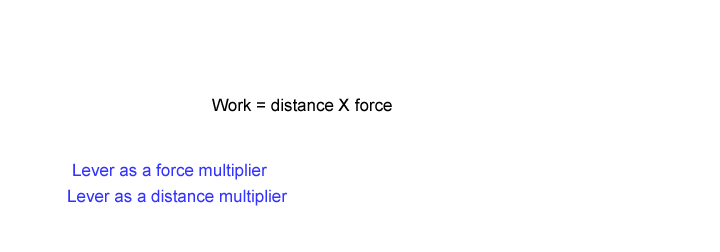


Look at the simplified animations above. What do you notice happens when the effort is closer to the fulcrum than the load?
So we define work as: Work = force X distance Look at the simplified animation once more. We do work on one side of the lever when we push down on it and the lever does some work on the load pushing it up. Knowing the formula for work, what can you deduce about the work done on both sides of the lever? |
||
If I convert a lever to a distance multiplier, where must the effort and load be relative to the fulcrum? A lever acting as a distance mulitplier is also known as a speed multiplier. Explain. |
||